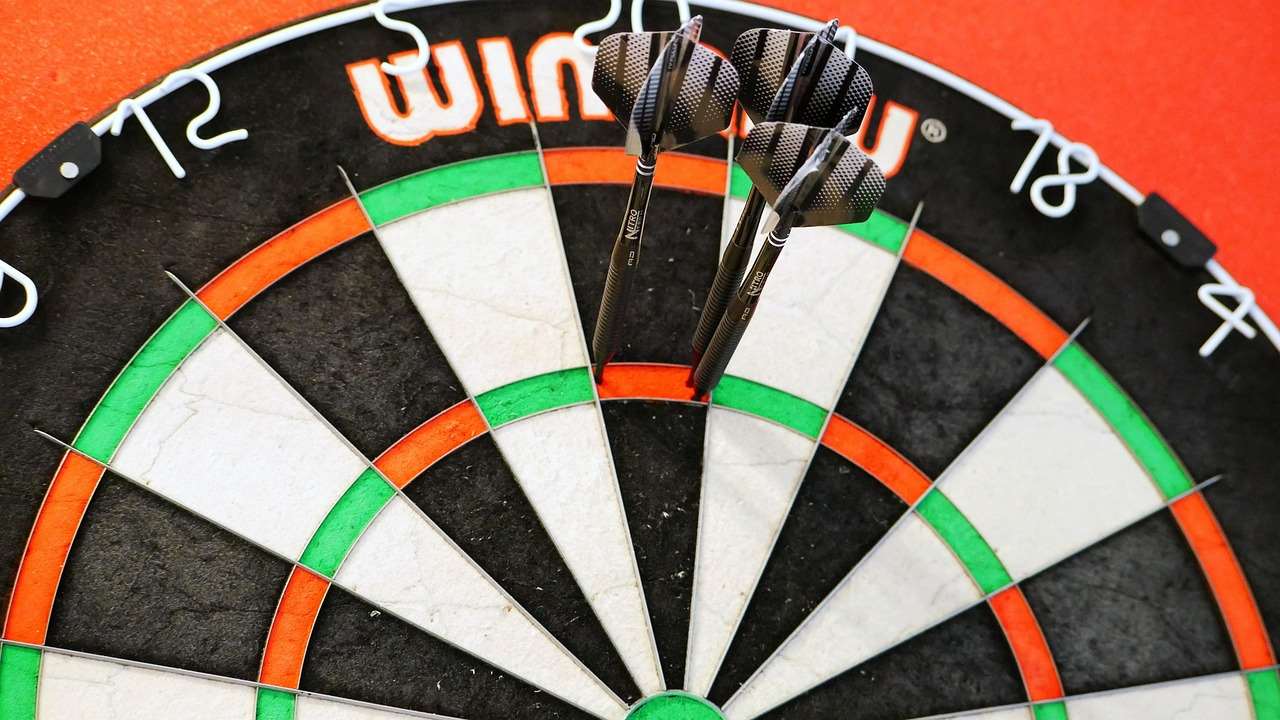The **treble in treble out TITO rules** in darts add a layer of strategic complexity: you must *begin* and *end* a game phase by hitting a treble. This article will break down the intricacies of TITO, clarifying its application, variations, and strategic implications for players of all skill levels. We’ll explore gameplay, scoring, and how to leverage this rule for competitive advantage.
⚠️ Still Using Pen & Paper (or a Chalkboard)?! ⚠️
Step into the future! The Dart Counter App handles all the scoring, suggests checkouts, and tracks your stats automatically. It's easier than you think!
Try the Smart Dart Counter App FREE!Ready for an upgrade? Click above!
Understanding Treble In Treble Out TITO Rules
**Treble in treble out TITO rules** introduce a significant hurdle compared to standard dart games. In essence, players cannot start scoring until they hit a treble, and they must finish the game with a treble as well. This impacts strategy considerably, forcing players to focus on accuracy and precision when aiming for the treble ring.
Many players find that TITO increases both the challenge and excitement of a darts match. The reliance on hitting trebles elevates the skill ceiling, creating a more engaging experience. It’s a popular variation for seasoned players looking for a different type of challenge and also offers a fun learning curve for developing players seeking to improve their accuracy.

Core Components of TITO
Let’s delve into the specific aspects that define **treble in treble out TITO rules**:
- Starting Condition: A player must hit any treble on the dartboard to begin accumulating points.
- Scoring: Once ‘in’, standard scoring rules apply. Points are deducted from the starting score (usually 301 or 501).
- Finishing Condition: To win, a player must reduce their score to zero by hitting a treble. If a player goes below zero (busts), the score returns to what it was at the start of that turn.
- Busting: Similar to traditional darts, any score that results in 1 or 0 requiring anything other than a double or treble results in a ‘bust’ and the turn score is forfeited.
Understanding these components is crucial for mastering the game and developing effective strategies.
How to Play Treble In Treble Out Darts
Playing **treble in treble out TITO rules** requires a shift in focus. Here’s a detailed guide to get you started:
- Determine the Starting Score: Decide on the starting score (e.g., 301 or 501).
- The ‘In’ Phase: Players take turns throwing three darts, aiming for any treble on the board. No score is counted until a treble is hit.
- Scoring Phase: Once a treble is hit, the player’s score is activated, and standard scoring rules apply. Deduct the score from each dart from the total.
- The ‘Out’ Phase: Players must reduce their score to a number that can be finished with one treble (i.e., have a score equal to a treble number). You cannot win by hitting a double or single.
- Winning: The first player to reduce their score to zero with a treble wins the game.
It’s vital to practice hitting trebles consistently to excel in this variation. Knowing Darts Variants Fun Games will also help you grasp variations on these and other darts challenges.

Strategic Considerations for TITO Games
Winning at **treble in treble out TITO rules** involves careful planning and execution. Here are some key strategic tips:
- Treble Accuracy: Prioritize accuracy above all else. Focus your practice on hitting the treble 20 and other high-scoring trebles.
- Score Management: Aim to leave yourself with a treble finish whenever possible.
- Opponent Awareness: Pay attention to your opponent’s score and adjust your strategy accordingly. If your opponent is close to finishing, you might need to take more risks.
- Mental Fortitude: TITO can be mentally challenging. Stay focused and avoid getting frustrated by misses.
Advanced Strategies in Treble In Treble Out TITO Rules
Once you have grasped the basics of **treble in treble out TITO rules**, you can move onto some advanced strategies. These are designed to give you an edge over your opponents and improve your overall gameplay.
Targeting Specific Trebles
While any treble will get you ‘in’, some trebles are more strategically advantageous than others. The treble 20 is often the primary target, as it offers the highest single-dart score. However, other trebles, such as the treble 19 and treble 18, can be useful for setting up favorable finishes. Practice your ability to switch between different trebles based on the score you need.

The Importance of Setups
A crucial aspect of TITO strategy is setting yourself up for a treble finish. This often involves making calculated decisions in the middle of the game to leave yourself with a score that is easily divisible by a treble number. For example, if you are playing 501, you might aim to leave yourself with 120 (treble 20), 90 (treble 30, if playing with a board that has a 30), or 60 (treble 20).
Dealing with Pressure
The ‘out’ phase in **treble in treble out TITO rules** can be incredibly tense, especially when your opponent is also close to finishing. Practice throwing under pressure to improve your ability to hit the required treble. Try simulating game situations in practice, and focus on maintaining a calm and consistent throwing routine.
Common Mistakes and How to Avoid Them in TITO
Playing **treble in treble out TITO rules** can be challenging, and it’s easy to fall into common traps. Here’s a rundown of mistakes to watch out for and how to avoid them.
- Ignoring Score Management: Always be aware of the score you need to leave yourself for a treble finish.
- Rushing Throws: Take your time and focus on your technique, especially when under pressure.
- Failing to Adapt: Be prepared to adjust your strategy based on your opponent’s performance and the changing game dynamics.
- Not Practicing Trebles: Dedicate time to specifically practicing hitting trebles. The more consistent you are, the better your chances of success.

Variations on Treble In Treble Out Rules
While the core principles of **treble in treble out TITO rules** remain consistent, there are several variations that can add extra layers of complexity or fun:
- Double In, Treble Out: Players must start with a double but finish with a treble.
- Treble In, Double Out: Players must start with a treble but finish with a double.
- Bull In, Treble Out: Players must start with a bullseye but finish with a treble.
- Rotating TITO: The required ‘in’ and ‘out’ segments rotate (e.g., treble, then double, then single).
Why Play Treble In Treble Out? The Benefits
Engaging in **treble in treble out TITO rules** offers numerous benefits:
- Enhanced Accuracy: It forces players to improve their precision.
- Strategic Thinking: It necessitates more careful planning and decision-making.
- Increased Challenge: It provides a refreshing alternative for experienced players.
- Mental Resilience: It helps develop focus and composure under pressure.

Conclusion: Mastering the Art of Treble In Treble Out
**Treble in treble out TITO rules** presents a unique and rewarding challenge for dart players. By understanding the core components, practicing diligently, and developing effective strategies, you can master this exciting variation and elevate your game. Embrace the challenge, refine your accuracy, and enjoy the strategic depth that TITO brings to the dartboard. Consider exploring old dart games rules for more context around the history of darts. If you’re interested in further expanding your darts skills and knowledge, explore other dart game variations and continue to refine your throwing technique. Good luck, and happy darting!
Hi, I’m Dieter, and I created Dartcounter (Dartcounterapp.com). My motivation wasn’t being a darts expert – quite the opposite! When I first started playing, I loved the game but found keeping accurate scores and tracking stats difficult and distracting.
I figured I couldn’t be the only one struggling with this. So, I decided to build a solution: an easy-to-use application that everyone, no matter their experience level, could use to manage scoring effortlessly.
My goal for Dartcounter was simple: let the app handle the numbers – the scoring, the averages, the stats, even checkout suggestions – so players could focus purely on their throw and enjoying the game. It began as a way to solve my own beginner’s problem, and I’m thrilled it has grown into a helpful tool for the wider darts community.